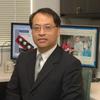The Molecular and BioPhotonics group research efforts focus on the development of the following:
- New photonic spectroscopic and imaging techniques for enhanced detection of molecules and biomolecules;
- Measurement standards for improving manufacturing quality and promoting acceptance of optical medical imaging technologies; and
- The application of photonics techniques to real world problems.
News and Updates
Projects and Programs
Publications
Software
Tools and Instruments
Awards
Patents
- “Multilayered Phantom Tissue Test Structure and Fabrication Process", Jeeseong Hwang, Christopher Stafford, Robert Chang, U.S. Patent No. US-9486179-B2, Nov. 8, 2016
- “Chirped-Pulse Terahertz Spectroscopy", Eyal Gerecht, David F. Plusquellic and Kevin O. Douglass, U.S. Patent No. US_8748822_B1, June 20, 2014.
- “A Fast-Switching Arbitrary Frequency Light Source for Broadband Spectroscopic Applications”, David Plusquellic, Kevin O. Douglass, Stephen Maxwell, Joseph T. Hodges, David A. Long, and Gar-wing Truong, U.S. Patent No. US_8642982_B2, Feb. 4, 2014.
- “An Optical Two-Dimensional Servo-Loop for Laser Beam Stabilization and/or Position Encoding", W.A. Majewski and D.F. Plusquellic, U.S. Patent No. 4,994,661, Feb 19, 1991.
Contacts
Group Leader
-
(303) 497-7287
















